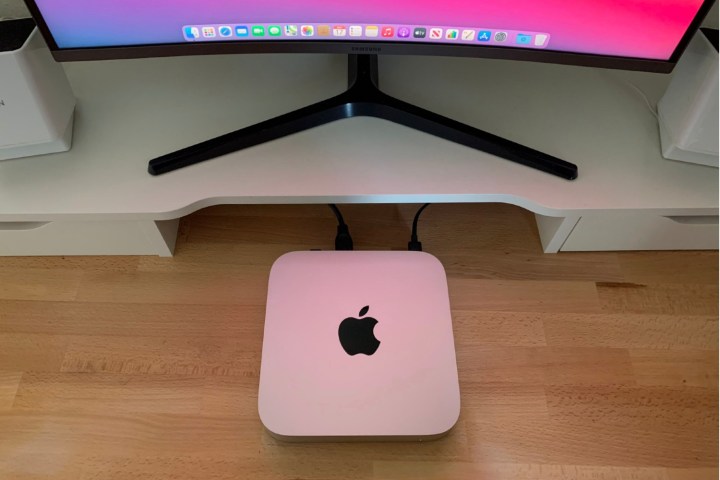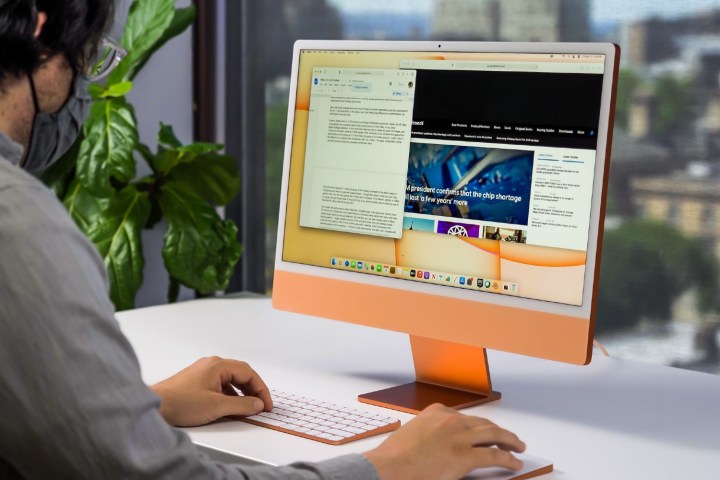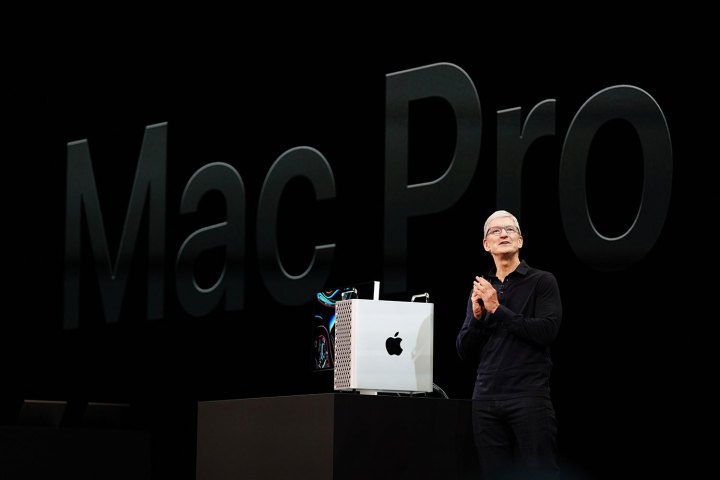Apple delivered a host of announcements at its Unleashed event, most of which was proved the rumors true. Announcements included the new M1 Pro and M1 Max chips that power the newly redesigned MacBook Pro, as well as the AirPods 3, which bring spatial audio and head tracking to a lower price point in Apple’s personal audio lineup.
But in terms of new products, there are still a few that Apple won’t be acting on until 2022.
Mac mini

Prior to Apple CEO Tim Cook taking the stage, there were rumors that Apple could be redesigning the Mac mini to be slimmer and more powerful, with more ports than the current model. The last time we saw Apple update the beloved diminutive desktop was last year, where the Mac mini was upgraded from its Intel-based brains to Apple’s in-house M1 processor.
Internet leakers, like Jon Prosser, had speculated that the new desktop would get upgraded to Apple’s more powerful processors this year. Initially rumored to be called the Apple M1x silicon, the upgraded processor was revealed by Apple as the M1 Pro and M1 Max during the event. The latter is the more premium of the two and will deliver even better processing and graphics capabilities when compared to Intel’s x86-based chips and even Apple’s vanilla M1 silicon.
In terms of design, Prosser theorized that the Mac mini would come in a slightly smaller size with a plexiglass top and aluminum enclosure to make the design appear more like an iPhone 13. The new Mac mini could also come with the iMac’s two-tone finish, a magnetic power port for MagSafe-like charging, and even more ports for a more Pro-like experience. Prosser even shared renders of the desktop, but unfortunately for mini fans, Apple was entirely focused on the MacBook Pro this time around for its Mac upgrade. It’s now believed that the Mac mini won’t get updated until 2022.
Larger iMac Pro

Apple had hit a home run with its slim 24-inch iMac refresh, but there were hopes that the company would debut a second, more powerful model with an even larger display. Unlike the Intel-based iMacs that the M1 model replaced, Apple’s M1-powered iMac is available in just one screen configuration: 24 inches.
There were hopes that Apple would introduce a second, more “Pro” configuration with a larger display, and rumors suggested that the company was eyeing a potential 30-inch panel to succeed the 27-inch Intel iMac model.
Like the rumored Mac mini refresh, this didn’t pan out, but that wasn’t entirely surprising — earlier this summer, there was speculation that Apple’s larger iMac ambitions may be postponed until 2022.
It is believed that the new model would come with a more powerful M1 processor, and perhaps 2022 will see a 30- or 32-inch iMac with an M1 Pro or M1 Max under the hood. Hopeful iMac fans were looking forward to slimmed-down bezels — particularly in the chin area — and perhaps even more muted color options in a Pro model.
Mac Pro

Apple’s powerful M1 Max processor is ripe for Mac Pro levels of performance. Early rumors suggested that the 32-core GPU on the M1 Max processor would be destined for Apple’s Pro desktop, but that didn’t work out this year. The M1 processor with its lower power consumption, better thermal regulation, and improved processing and graphics prowess could allow Apple to shrink down its cheese grater desktop to about half the size, rumors suggested.
Given that the Mac Pro is the sole holdout — it still is only available with Intel architecture and discrete AMD graphics — it seems like the M1 Max would have been the perfect Apple silicon to take this desktop to the next level. Perhaps Apple is waiting for an even more powerful M2 processor. When rumors began surfacing of a Mac Pro refresh, it was reported that Apple’s premium desktop would ship with a 32-core CPU design — the M1 Max comes with a 10-core CPU and 32-core GPU.
Apple Glass

Though the first three products on this list appear to be likely candidates to have debuted at October’s Unleashed event, Apple’s augmented or virtual reality glasses — rumored to be called Apple Glass — is something out of left field. Given that it is an entirely new product category for Apple, we would expect Apple Glass to have its own special event instead of being lumped into a presentation that’s focused on updates to the Mac and Apple Music.
Though others — like Google — have tried before it, Apple’s entry into the augmented reality space is filled with intrigue and anticipation. Apple Glass could theoretically — if rumors prove true — deliver information from your iPhone, iPac, Mac, or even Apple Watch to your eyes and could be powered by a custom Starboard operating system, which was uncovered in the final version of iOS. Starboard could debut as GlassOS to follow Apple’s tvOS, WatchOS, and iPadOS naming conventions for products that are based on derivatives of iOS on the iPhone.
Unlike existing VRglasses and mixed reality headsets today, Apple Glass is intended, at least according to rumors, to surface information from your phone to your face so it will work more like Google Glass rather than Microsoft’s HoloLens. This means you’ll receive iMessage updates, directions from Maps, and emails over your field of view when you’re wearing Apple’s goggles.
Apple hasn’t been shy with its work in the space — it has filed numerous patents in recent years to suggest how privacy can be preserved with Apple Glass through a removable camera model, a finger-tracking module, and more. Rumors suggest that the headset could launch in 2022 and cost as much as $1,000, which wouldn’t be too far off from Google Glass’ original price of $1,499. Leaker Jon Prosser, however, believes that Apple’s goggles could debut at a price as low as $499.
Editors' Recommendations
- The easy way to choose between the Mac Studio and Mac mini
- I’m a laptop reviewer. Here’s why I still use a laptop from 2021
- Apple’s M3 Max appears to keep up with Intel’s top desktop CPU
- How to watch Apple’s ‘Scary Fast’ Mac launch event if you missed it
- Apple has everything it needs to dominate gaming — except games


